SKOWHEGAN — The Rev. Paul Dumais, wearing a red plaid shirt and a white apron tied snugly around his waist, pointed a hand-held instrument at one of his griddles to check the temperature.
“My grandmother would not have been caught using an infrared thermometer,” the priest joked to the audience gathered at the Kneading Conference last week to hear his presentation on making the traditional Acadian flatbread known as ployes. “But I like science.”
That became abundantly clear over the next couple of hours, as the Madawaska native demonstrated just about every way imaginable to make ployes (rhymes with toys).
Reflecting the dozens of experiments he’s performed in his kitchen in Lewiston over the past year, Dumais began by making ployes for the audience using the popular Bouchard Family Farm mix. From there, he moved on to from-scratch recipes, blending buckwheat flour with all-purpose white flour or whole wheat flour, in various combinations and brands, bleached and unbleached.
He kept painstaking track of how much water he added so he would know if his batter was 100 percent or 170 percent hydrated.
And the leavening agent? Well, he said, his grandmother would never use anything but Rumford Baking Powder. “There was a rumor going around that if you did not use Rumford, your ployes would turn green,” he explained.
Jokes aside, Dumais’ very serious study of ployes is deeply rooted in tradition, so much so that when he gives talks about it, he begins by quoting from Longfellow’s poem “Evangeline,” which describes the Acadians’ ouster from Nova Scotia by the British in the late 17th century:
“Waste are those pleasant farms, and the farmers forever departed!
Scattered like dust and leaves, when the mighty blasts of October
Seize them, and whirl them aloft, and sprinkle them far o’er the ocean
Naught but tradition remains of the beautiful village of Grand-Pré.”
To Dumais, that Acadian tradition includes the passing down of food from generation to generation. As the priest has churned out hundreds of ployes in his little experiments, he’s become convinced he can now re-create something that has long been lost: authentic ployes as they were made by the first Acadians, before the invention of baking powder (it was first commercially produced in America around the time of the Civil War), when they first settled in the upper St. John River Valley on the Maine-New Brunswick border.
Dumais’ “authentic” ploye, made with a starter he developed himself, is naturally leavened and has a sourdough-like tang. It is thinner and less pancake-like than a ploye made with a commercial mix, and cooks up with more and smaller bubbles (called eyes) in the batter – the feature that helps butter settle into the bread’s nooks and crannies before it’s rolled up and eaten with a bowl of hot chicken stew.
Ployes are often referred to as buckwheat pancakes or crepes. Dumais prefers to call them a traditional flatbread.
“Crepes are what you have in Quebec city,” he points out, “and so to associate these with crepes is to, from a perception point of view, miss what a ploye is. It’s not just another crepe. It’s a thing of its own.”
Dumais thinks ployes must be linked somehow to the French (specifically Brittany) crepes known as gallettes de sarrasin. He’s not sure exactly what the connection is, but suspects Acadian ployes are the poor country cousin of gallettes since they don’t contain milk, egg, sugar, or other expensive ingredients.
Janice Bouchard, co-owner of Bouchard Family Farms, which makes the most popular commercial ployes mix, agrees. “Back in the day, it was basically a poor man’s bread,” she said. “If you couldn’t afford wheat, you would have to eat the ployes. It was just a quick, easy, cheap way to make something that would sustain a family of 10 kids.”
A SPECIAL KIND OF BUCKWHEAT
What is perhaps most distinctive about the ployes made in Maine towns like Frenchville, Van Buren, Fort Kent and Madawaska is the buckwheat flour that’s used in the mix, made from silverskin buckwheat. The buckwheat flour made from common buckwheat is dark, a grayish black. The flour that comes from silverskin buckwheat, grown only in a very small part of northern Maine and parts of maritime Canada, is a light color, almost yellow. The hulls of silverskin buckwheat are dark and tight and hard to crack, like the hulls found on ancient grains.
“It’s like an undomesticated buckwheat,” Dumais said.
Silverskin buckwheat matures in 10 to 12 weeks, which means it’s well-suited to northern Maine’s short growing season. It’s high in protein, and it’s actually not a grain, so it’s gluten-free. But only two Maine farms grow it in any appreciable amounts today. Dumais’ great uncle Lawrence grew the buckwheat on his potato farm in Frenchville, and now his sons grow a modest amount every year in honor of their father, and have it milled across the border in Canada. They make and sell their own ployes mix, on a much smaller scale than the Bouchards, but they don’t do any marketing. Family and friends simply drop by when they need some. “It’s in the garage in the back corner,” Dumais said, “and you get the bags you need and you leave the money on the counter.”
The Bouchard Family Farm in Fort Kent began making and selling ployes mix in 1983. Janice Bouchard said that while ployes used to be a staple eaten at every meal, over the years it lost its place in northern Maine homes to sliced bread. When women started working outside the home and didn’t have time to make ployes anymore, that was almost the end of it.
“If we hadn’t come up with this mix in the early 1980s, I don’t know how many people would be making ployes today,” Bouchard said. “It probably would have been a lost art.”
Today, if you eat ployes regularly, that probably means once a week instead of three times a day.
“Back 10, 20, 30 years ago, Saturday night was beans and ployes and hot dogs, and I still have aunts who do that,” Bouchard said. “So some people have it on a regular weekly basis. Some people wait for colder weather, when they’re having their chicken stew. It’s like a comfort food. You have a roast or stews, you need a stack of ployes to accompany that.”
The traditional way to eat ployes is to spread them with butter and roll them up, but the Bouchards promote many other uses, saying anything a crepe can do, a ploye can do.
“A lot of people say if you put maple syrup on your ploye, you’re ruining it,” Bouchard said. “I love the maple syrup. A lot of people use peanut butter and molasses. I still like eating it as a crepe with fruit and whipped cream, or ice cream and chocolate sauce. But you tell older people that – try it with some ice cream – and they look at you like you have two heads.”
Bouchard estimates that 80 percent of the people in northern Maine who still eat ployes use her family’s mix, which is based on her husband’s grandmother’s recipe. The rest make their own from scratch, usually from a family recipe. “Every grandmother had their own way of making it,” Bouchard said.
With the rise of the gluten-free craze, Bouchard said that sales of the family’s certified gluten-free buckwheat flour have now surpassed sales of their ployes mix. The ployes/flour operation, once just a sideline, has done so well that it now makes up 60 percent of the farm’s business. The family cut back on its potato crop this year so they could devote more time to it.
Still, one has to wonder: With silverskin buckwheat and a taste for ployes limited to such a small portion of northern Maine and Canada, what would happen if the Bouchards ever decided to stop farming? Would ployes eventually disappear? Janice Bouchard is hopeful that day will never come – she’s banking on her 18-year-old son taking over the farm when he gets out of school – but admits the thought has crossed her mind.
“I’ve thought about it a few times, and I get really upset,” she said. “I think if we’re not there to do it, somebody else might step up to the plate, or we could sell the business and keep it running because we’ve grown it into a pretty successful business over the past 30-something years. I’d kind of hate to see it die.”
At the Kneading Conference, Paul Dumais did his best to keep the tradition alive by making ployes – lots of them.
He poured batter from a small ladle, being careful to give it a little flourish at the end. “There’s something about this little swirl that is essential to making ployes,” he joked.
When one turned out to be too thick and developed a wet spot, Dumais flipped it over, gasping in faux horror. “They’re not supposed to be flipped over,” he said, explaining his reaction. “It means you’ve failed.”
CLUE FROM A SOMALI COOK
Dumais’ interest in bread dates back to the time he took a break from college to work on a farm for three years. He met a baker in Kansas who was making “beautiful loaves” of naturally leavened bread in a wood-fired oven and inspired Dumais to try his hand at it using wheat from the farm. Since 2007, Dumais has attended the Kneading Conference three times, and this past year, he has been baking bread more consistently. While he is interested in the local food scene and in issues of food security, Dumais bakes mostly as a contemplative activity.
Dumais had been working with the Lots to Gardens program at St. Mary’s Nutrition Center in Lewiston last year when he attended a potluck where a Somali woman was making some kind of savory pancake.
“It caught my attention because it’s only the second thing I’ve ever seen that looks like a ploye,” Dumais said. “It had the color of a ploye, but it was sharper because I think she had a little turmeric in there, and some herbs.”
The woman poured her batter onto a hot griddle and let the pancake cook through from the bottom without being turned over, just like a ploye. She stacked them on a plate, sprinkled them with sugar, then returned them to griddle for a moment to caramelize the sugar.
Dumais asked the woman several questions to try to find out what type of leavening agent she was using, and after getting through some communication issues, he discovered that “she has a jar, and from that jar she makes this batter.”
Dumais began to wonder if the Acadians had made their ployes with a starter, too, before the invention of baking powder. The next time he went home, he asked his 93-year-old great aunt Prescille. After some prodding, she remembered that her mother used to keep a little bucket on the shelf of the cookstove, which she drew from to make her batter.
Armed with this information, Dumais went back to his own kitchen and began experimenting.
“I just mixed buckwheat and all-purpose flour and water because that’s how you start any sourdough culture,” he said. “You have to tend it once a day, twice a day, there’s a little routine that you have to go through. But basically what you’re doing is you’re providing moisture and warmth to the ambient yeast that is in the flour.”
Once his starter became active, he began experimenting with the hydration levels, the weight of the salt and the timing of the fermentation. When he began making ployes, he discovered that the difference between what he grew up eating and this new flatbread he was making was “vast.”
“My initial reaction was ‘wow, this is like the difference between a quick biscuit and a slice of sourdough,’ ” Dumais said.
Dumais is hoping to take his version of ployes to the 2014 World Acadian Congress, which is being held in Aroostook County in August, so that he can spark renewed interest in this old Acadian food.
“I think it’s a subregional food that’s frozen in time in the St. John River Valley,” Dumais said. “It’s a living tradition that’s been passed on.”
Send questions/comments to the editors.

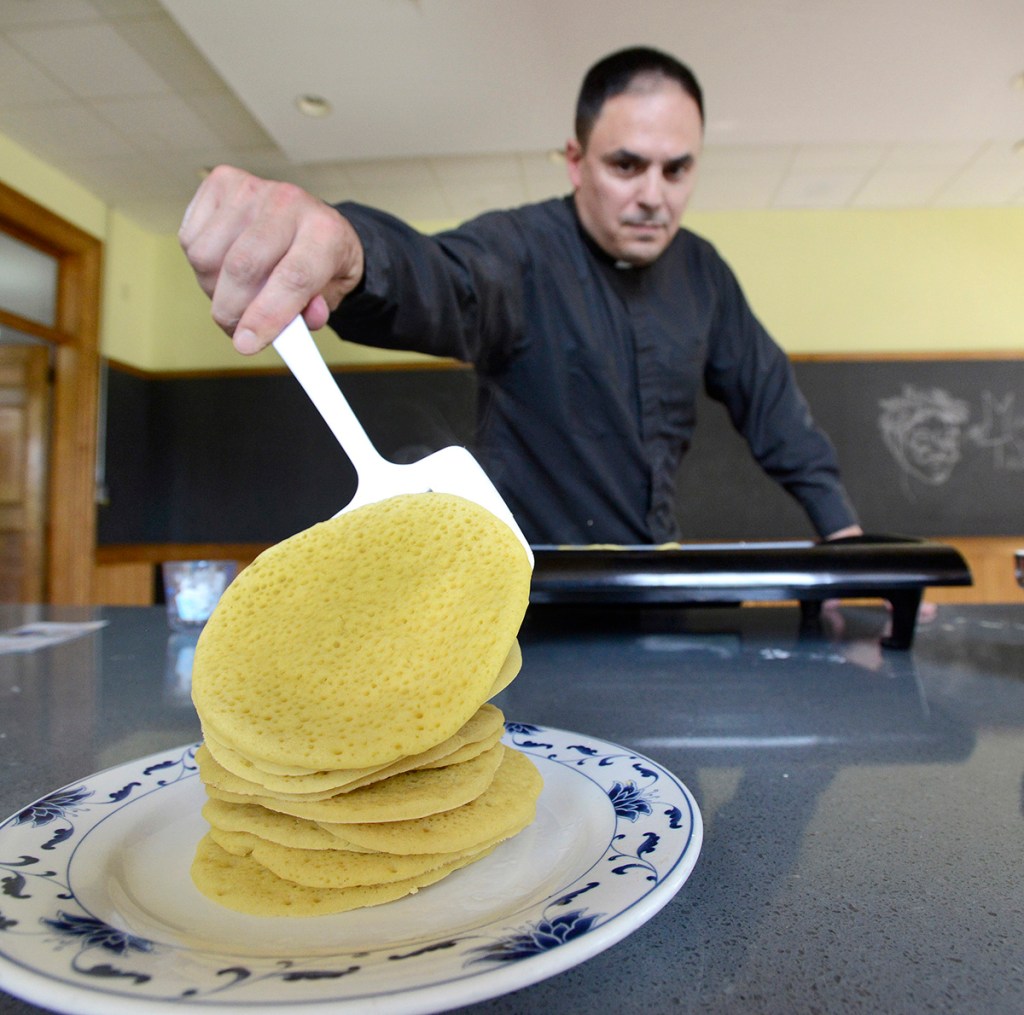
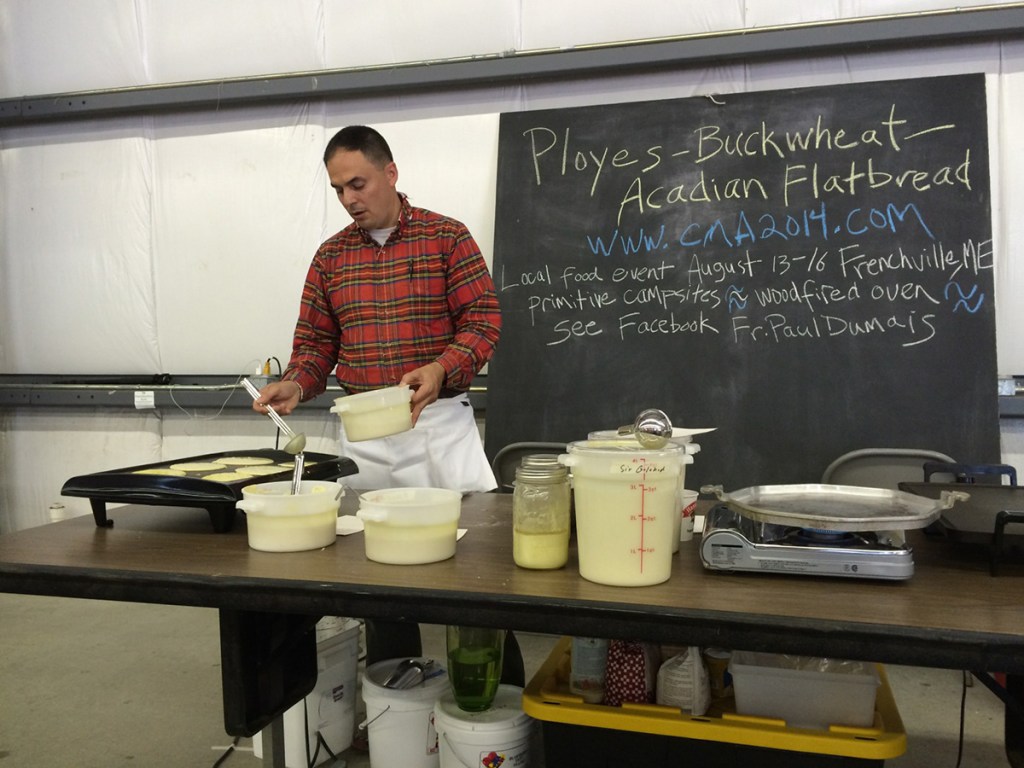
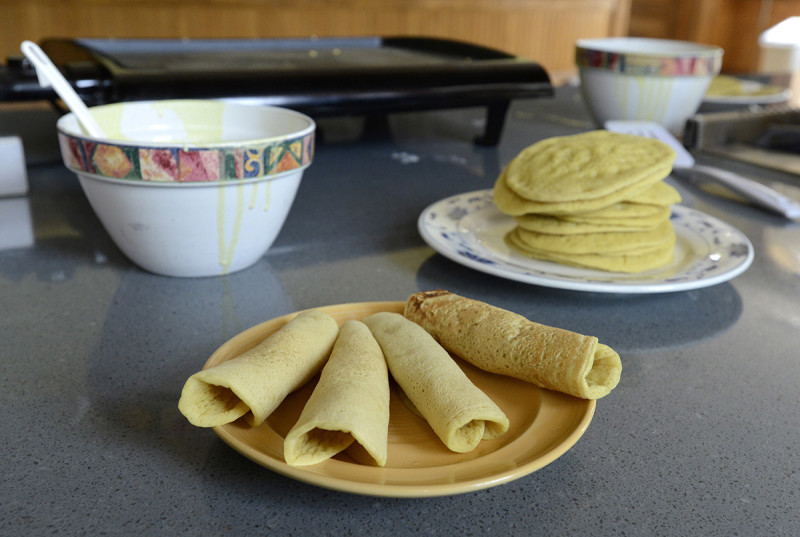
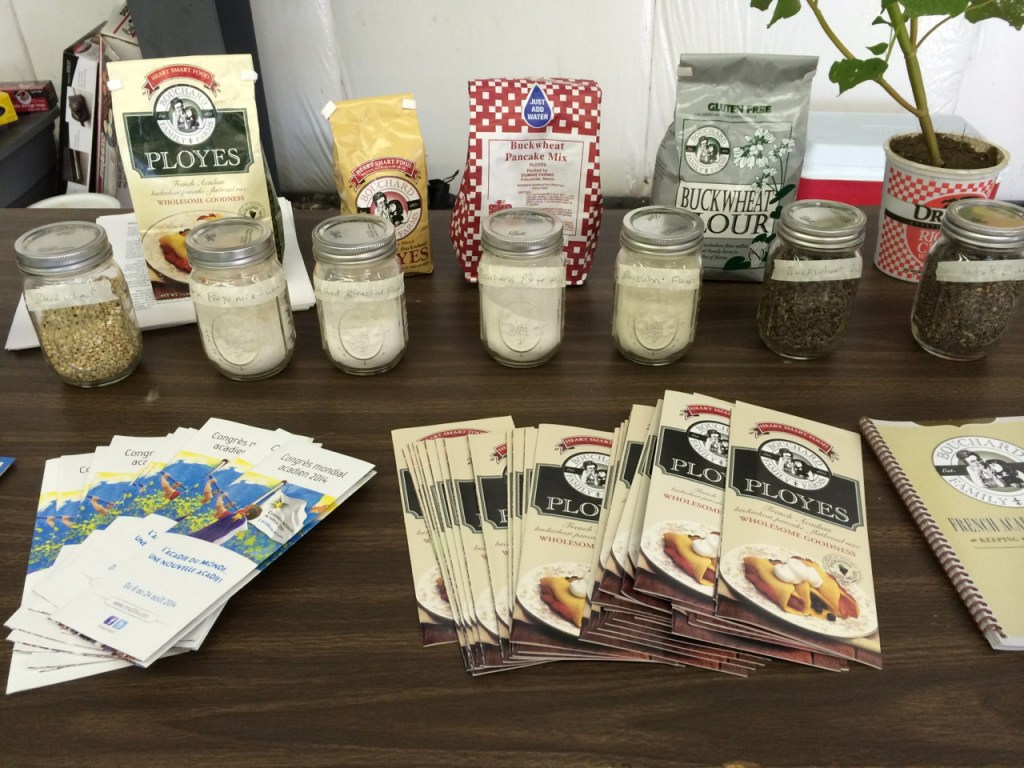
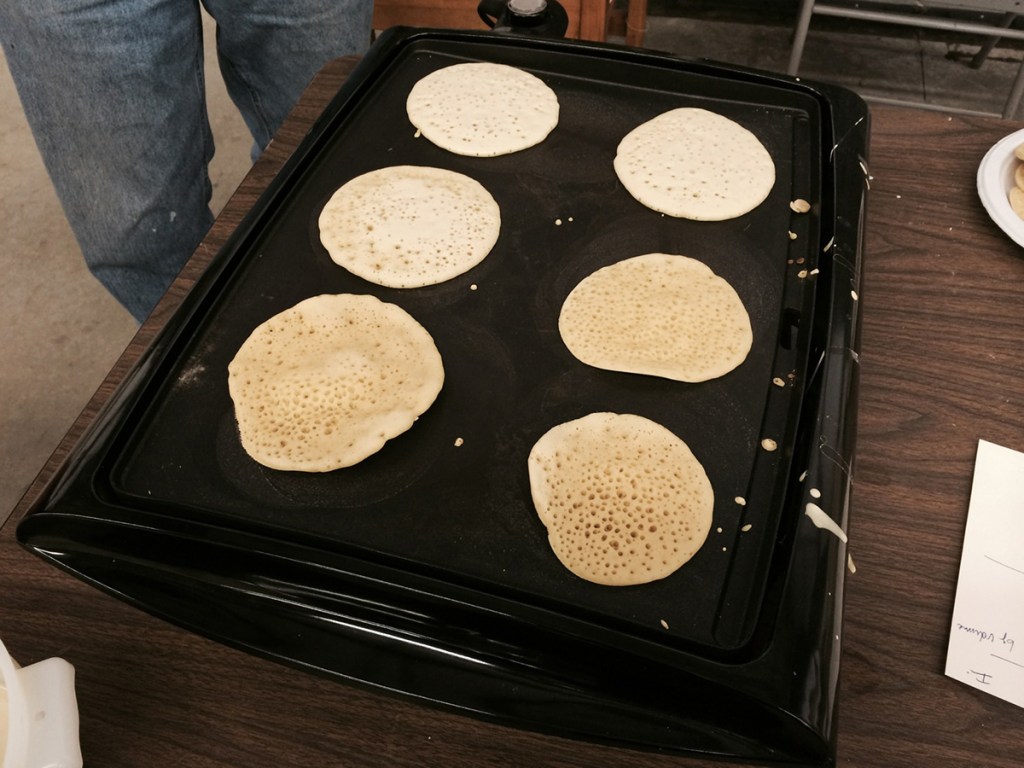
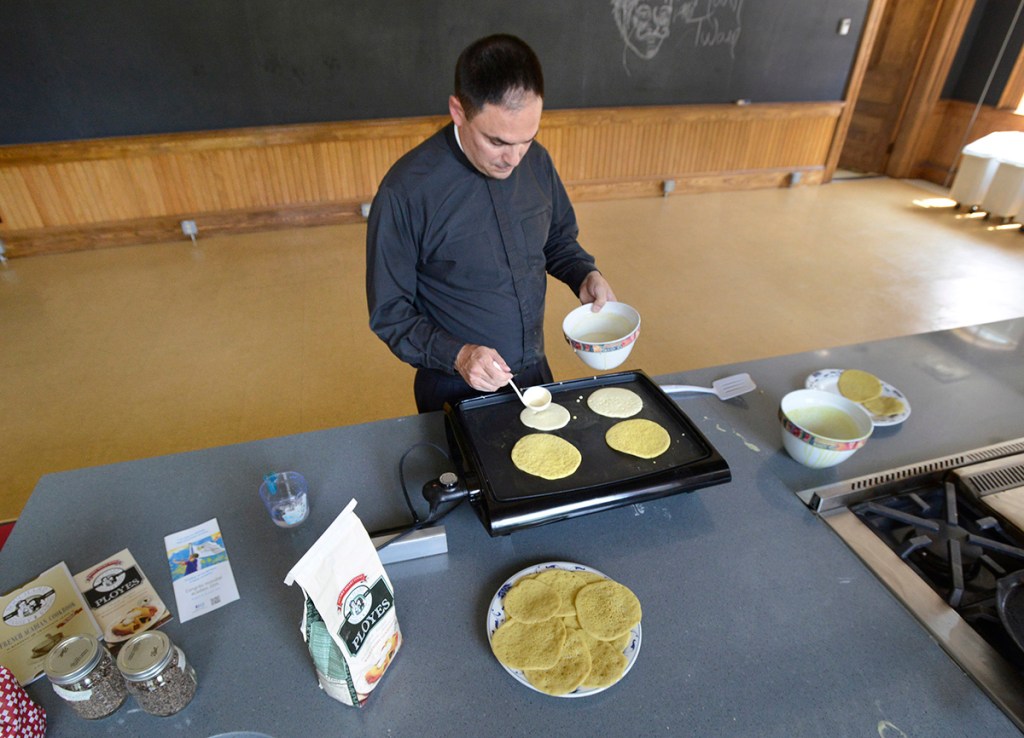
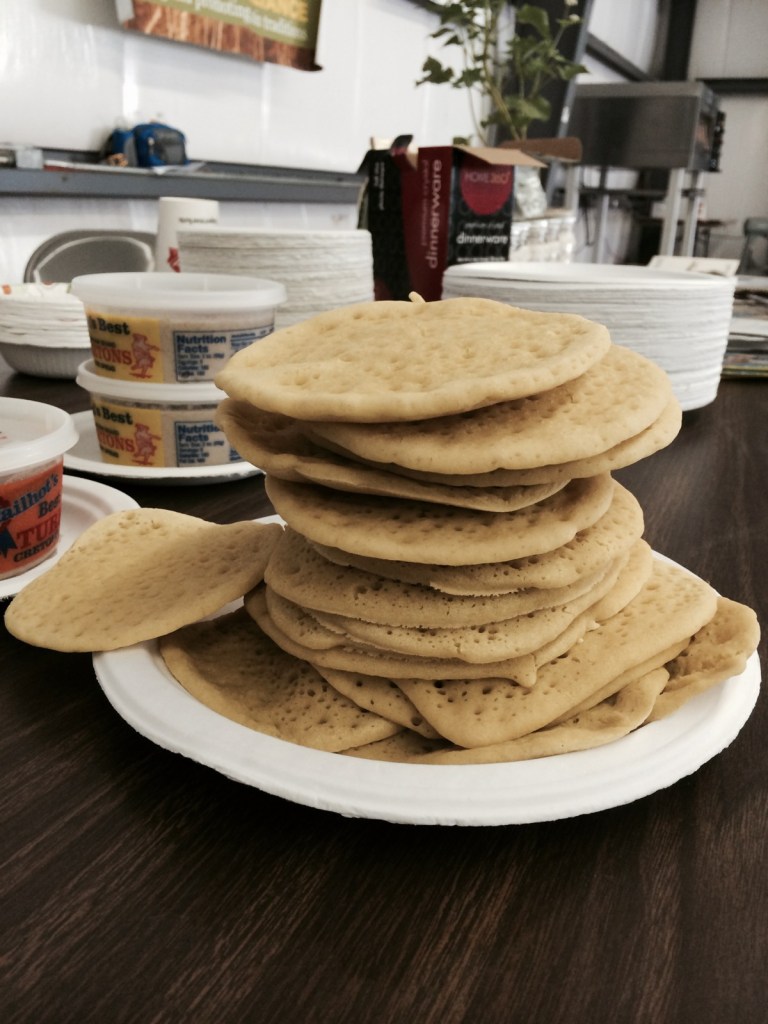
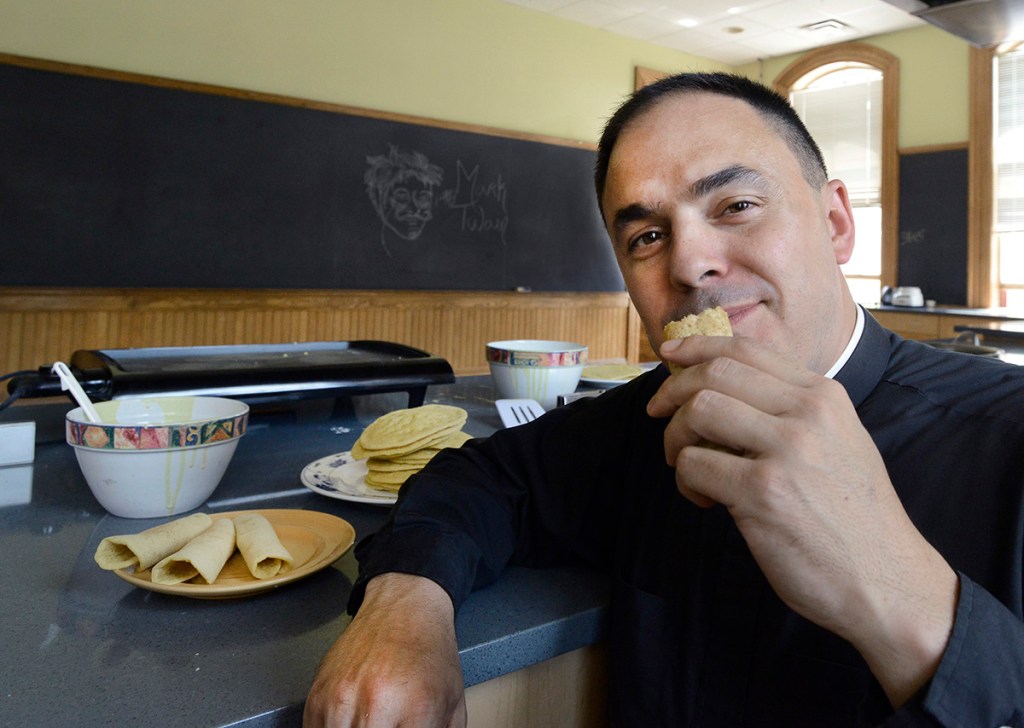
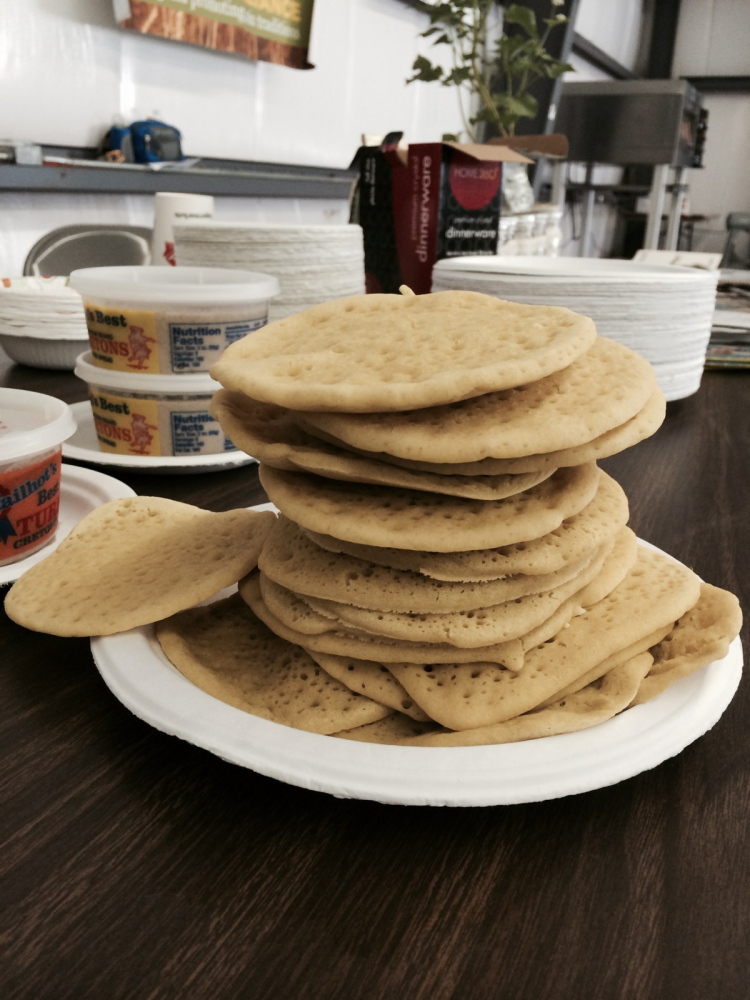
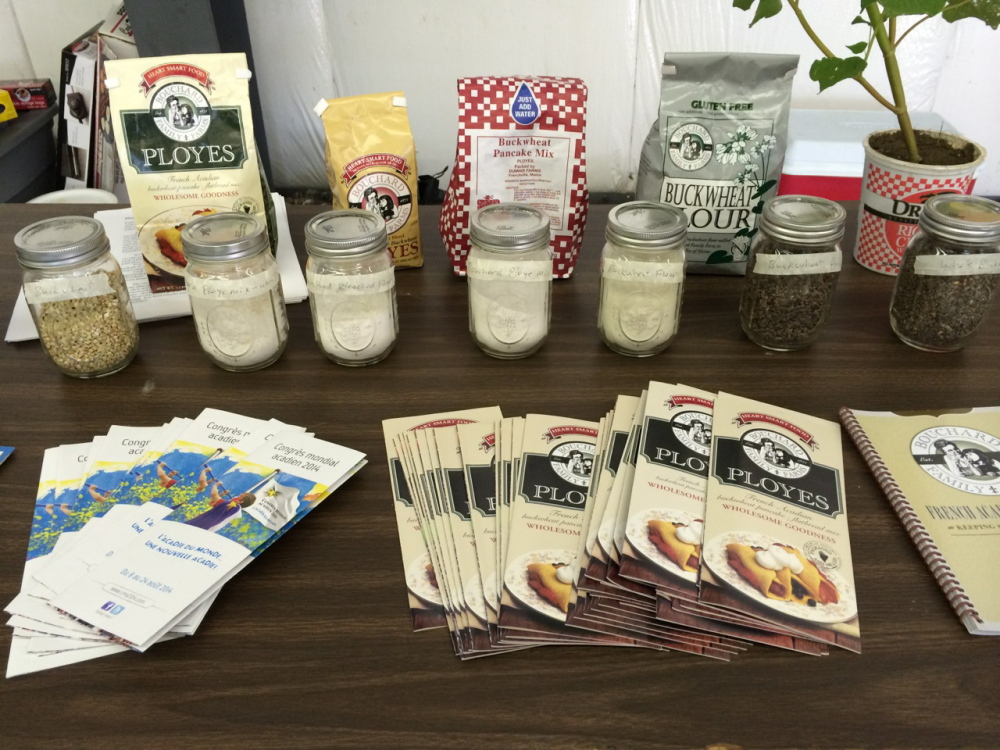
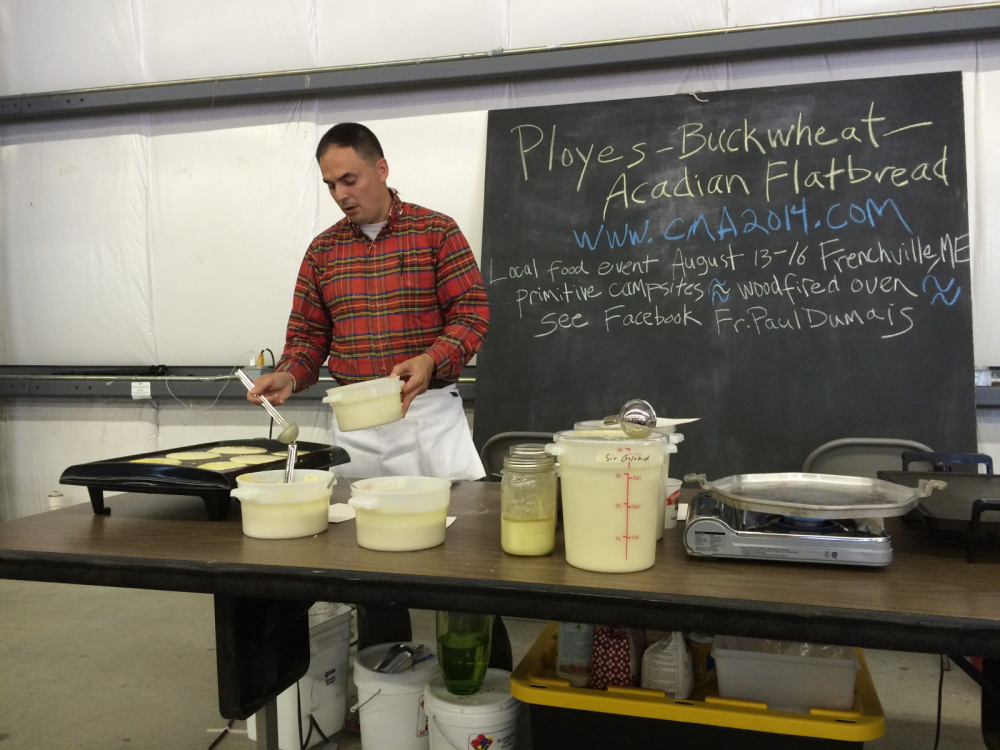
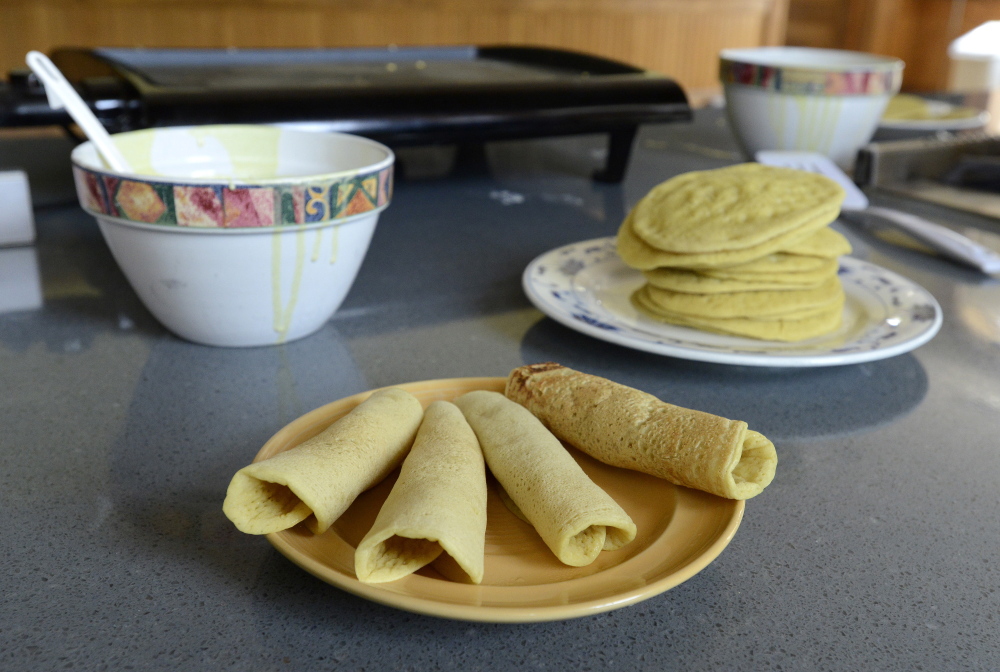
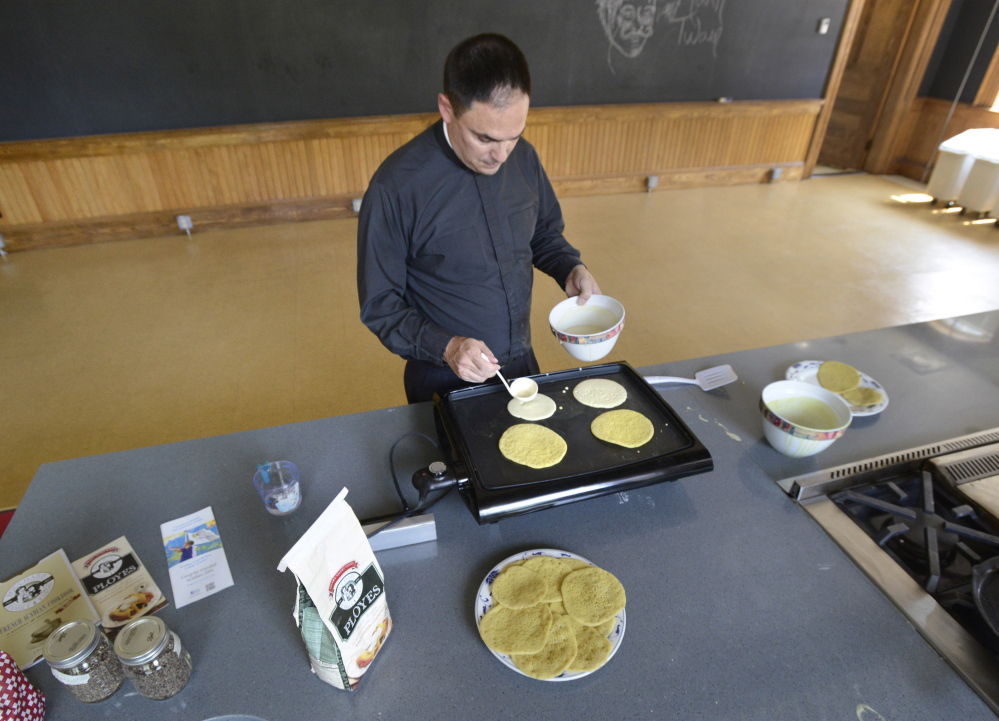


Success. Please wait for the page to reload. If the page does not reload within 5 seconds, please refresh the page.
Enter your email and password to access comments.
Hi, to comment on stories you must . This profile is in addition to your subscription and website login.
Already have a commenting profile? .
Invalid username/password.
Please check your email to confirm and complete your registration.
Only subscribers are eligible to post comments. Please subscribe or login first for digital access. Here’s why.
Use the form below to reset your password. When you've submitted your account email, we will send an email with a reset code.